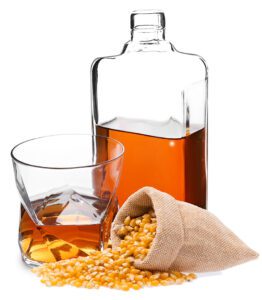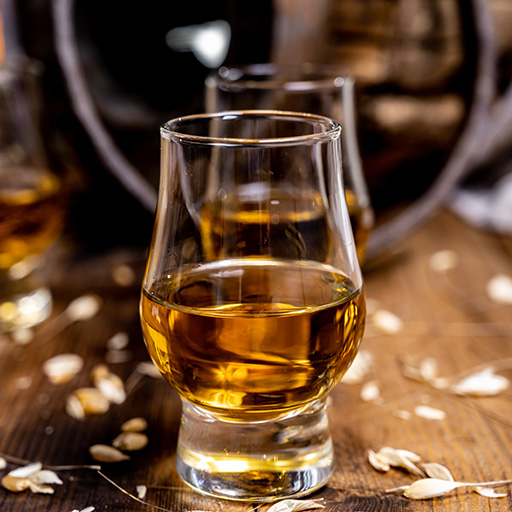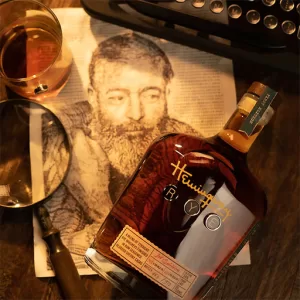Page Table of Contents
ToggleHow Bourbon is Made From Grain to Glass, A Step-By-Step Guide

How Bourbon is Made
Bourbon is a popular type of American whiskey that is made from corn. It is named after Bourbon County in Kentucky, where it was first produced in the 18th century. The process of making bourbon is unique and has certain requirements that must be met for it to be classified as bourbon. This guide will outline the steps necessary to make bourbon from start to finish.
To make bourbon, distillers must follow specific guidelines set forth by the U.S. government. These guidelines are known as the Bourbon regulations. The regulations state that bourbon must be: Made from at least 51% corn, aged in new charred oak barrels, distilled to no more than 160 proof (80% alcohol), and entered into the barrel for aging at no more than 125 proof (62.5% alcohol).
The ingredients: corn, rye, wheat, barley, and water
The first step in making bourbon is selecting the right grain type. Four main grains are used in bourbon whiskey: corn, rye, wheat, and barley. Bourbon must be made with at least 51% corn. The other grains each contribute their own unique flavor profile to the final product.
Rye provides a spicy flavor, wheat provides a sweet flavor, and barley rounds out the flavor and adds complexity. Each distiller has its own secret recipe for the perfect bourbon, so experimentation with different grain ratios is part of the fun.
Once the grain has been selected, it is time to grind it into a fine powder called “grist.” This “grist” powder will be used to create a “mash,” which is a mixture of water and grain that will be fermented. After the mash has been created, it is time to add yeast. Yeast is a vital part of the bourbon-making process, and several types can be used. The most common type of yeast used in bourbon production is Saccharomyces cerevisiae, which is also used in beer brewing.
The distilling process: fermenting, distilling, and aging
Once the yeast has been added, fermentation will begin, converting the sugars in the mash into alcohol after about two weeks. During this time, the temperature of the mash must be kept at a consistent level, around 60-70 degrees Fahrenheit. Once complete, this mash is distilled in large copper stills over an open flame in order to separate any impurities from the beverage. The mash will be converted into a liquid with an alcohol content to make bourbon through a distillation process called the high-proof distillate.
The high-proof distillate will then be stored in new or used oak barrels for a period of two to eight years. The length of time the bourbon is aged depends on how it is bottled and what type of bourbon it will become.
The barrel: new or used oak barrels
Oak barrels play a critical role in the production of bourbon whiskey. To achieve the desired flavor and color, producers must decide between using a new or used barrel for aging. New oak barrels provide fuller flavors and faster maturation than used ones as they give off more of their tannins, which add complexity to the drink. Used barrels are often preferred for specialty bourbons as they impart subtle notes from previously-aged wines or spirits that were stored in them.
When selecting which type of barrel to use, distillers must consider factors such as price, availability, flavor profiles and time constraints. New barrels are usually more expensive but age quicker while used ones can be procured at lower costs but take longer to mature. Ultimately, it’s up to each distiller to determine what works best for their product.
Blending and bottling: the final steps
The final two steps are blending and bottling, which bring together all of the processes in bourbon-making into one delicious end product.
- Blending involves taking whiskey from different barrels at different years, then mixing them together to form one consistent flavor for each brand. This ensures uniformity across every bottle and creates the recognizable flavor profile for each brand’s whiskey.
- Bottling follows after the blending process, in which it is filtered again to ensure clarity and quality before being placed in special bottles with custom labels for each brand. All this hard work culminates in a bottle that meets both company standards as well as regulations set forth by the federal government.
Conclusion: the taste of bourbon
The conclusion of our look into how bourbon is made brings us to the most important part: its taste. Bourbon, famous for its smoky aroma and sweet yet complex flavor profile, has captivated whiskey drinkers for generations. The process of creating it begins with aging the grain mash in charred oak barrels, which gives bourbon a deep amber color and an unmistakable flavor.
To enhance the flavor even further, distillers may also add additional ingredients like honey or spices to produce varying styles of bourbon. While each brand has its own unique recipe, all bourbons are sure to share similar characteristics such as a smooth finish and subtle hints of vanilla or caramel notes. Whether enjoyed neat or on the rocks, there’s no denying that a glass of quality bourbon is a true pleasure.
What's your flavor?
Choosing the right bourbon for your taste can be a daunting task. With so many different types of bourbons available, selecting the right one to suit your palate can be overwhelming. However, if you keep a few simple factors in mind, choosing your bourbon will be a breeze. First, you’ll want to decide whether or not you prefer an aged or unaged bourbon.
- Aged bourbons are made by aging bourbon in barrels for a longer period of time. They are typically more expensive, because they are often aged for at least four years. Aged bourbons have a richer flavor that includes hints of vanilla and caramel. Their color is much darker, ranging from amber to deep brown.
- Unaged bourbons, like Jim Beam White Label or Maker’s Mark, offer a smooth, subtle flavor that is easy to drink. These bourbons are typically made from corn, barley and rye grain. They are aged in new, charred oak barrels for a short period of time. These bourbons typically have a light amber color and do not contain any additives or coloring agents.
Now enjoy your bourbon
Bourbon has become one of America’s most beloved spirits. No matter your taste preference, there is a bourbon out there for everyone.
Finding that perfect bourbon is part of the fun that bourbon offers. So, good luck on your journey. Cheers, and enjoy!
For more from The Bourbon Wall, check out our posts on our Blog Page.



